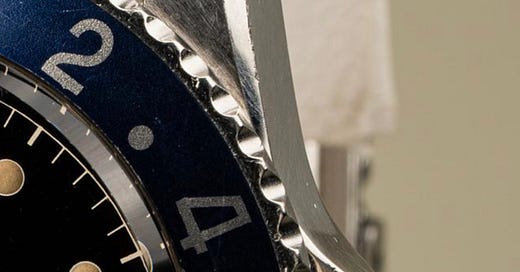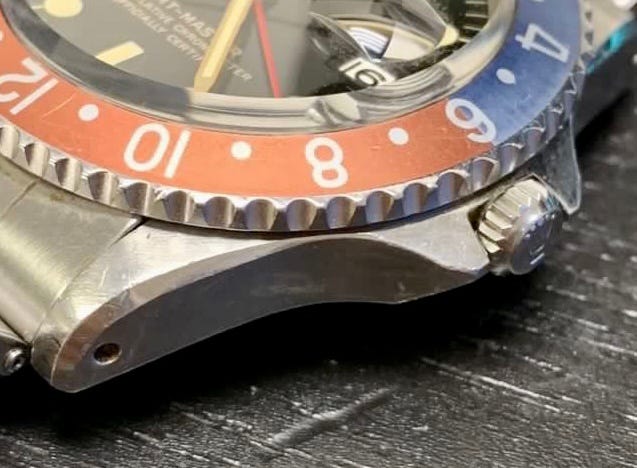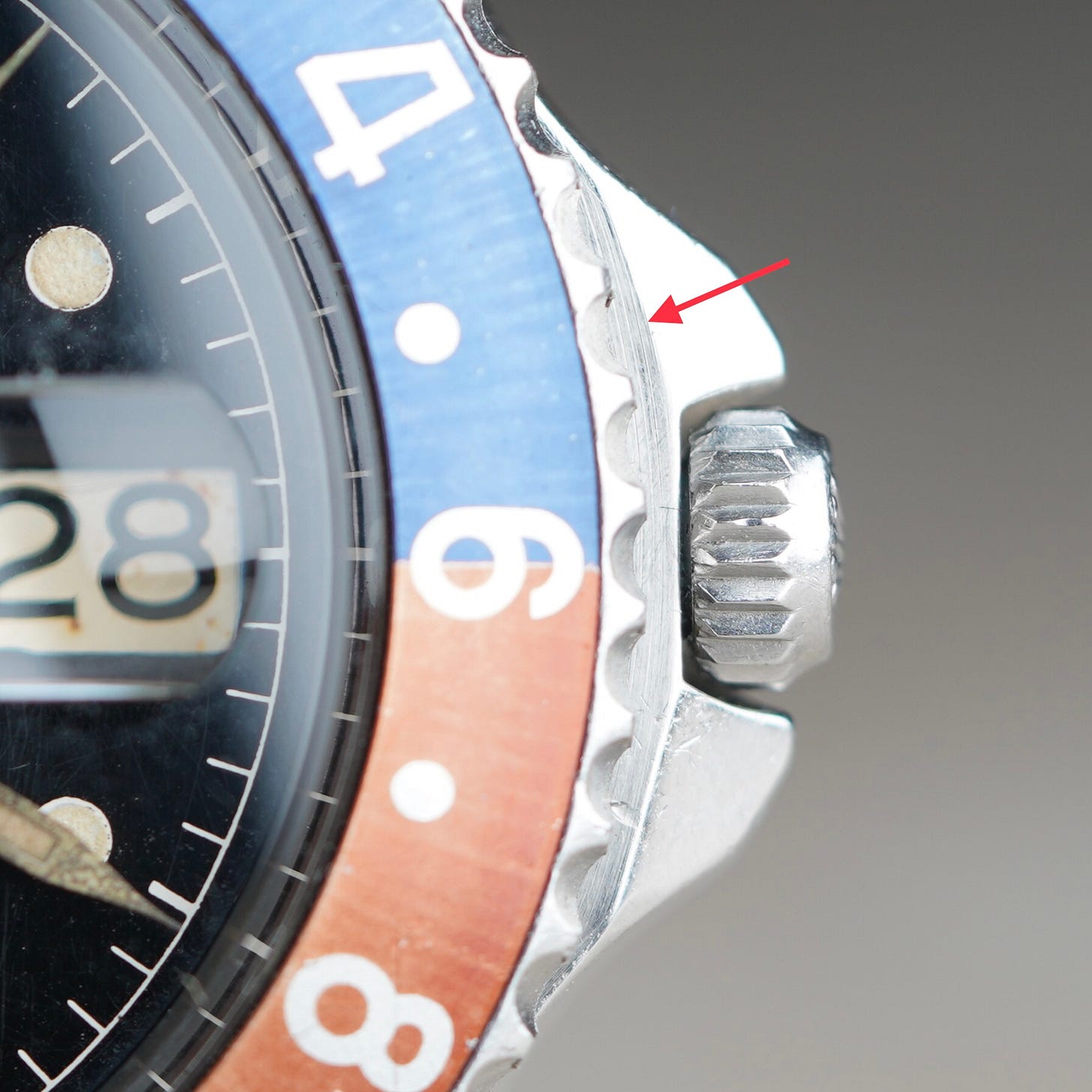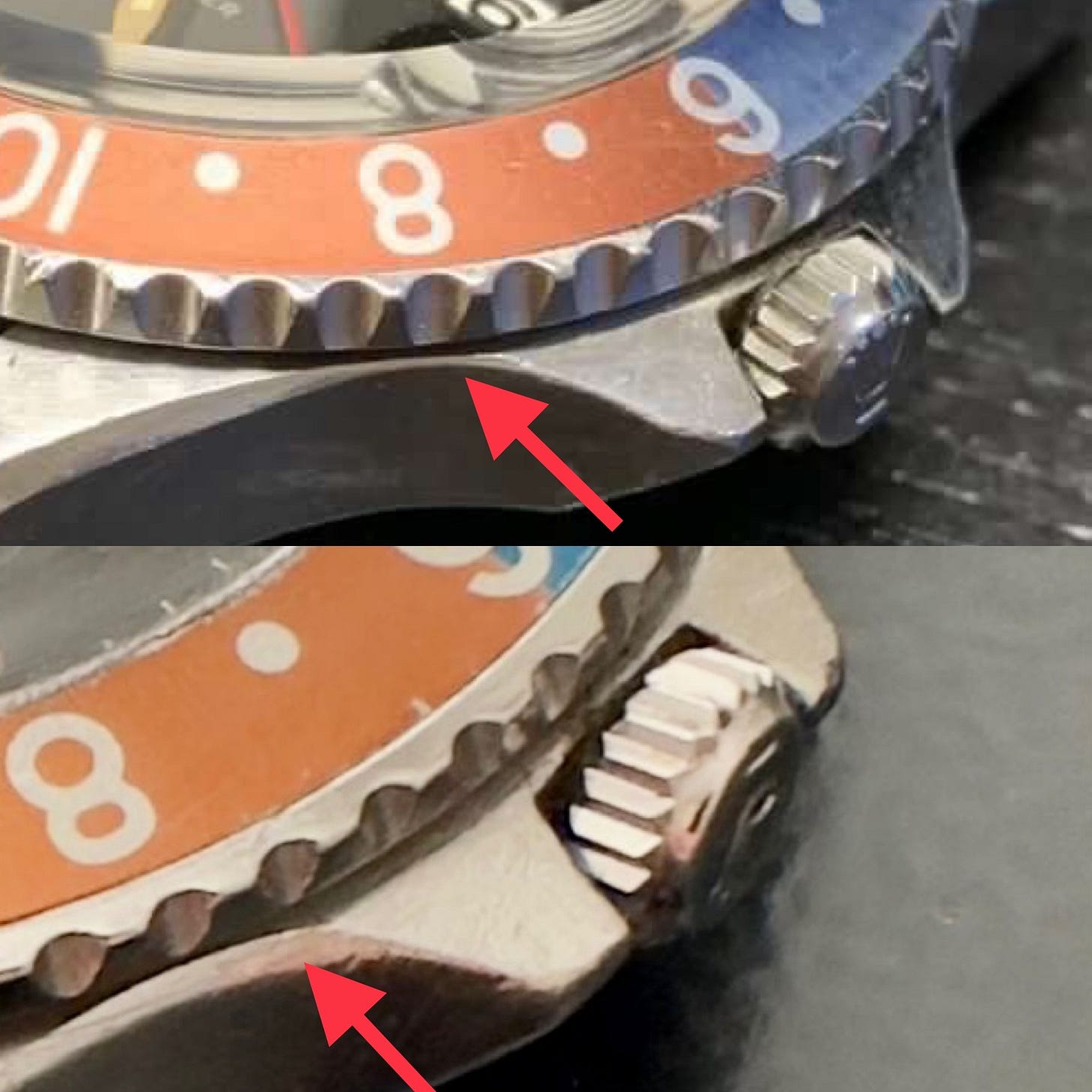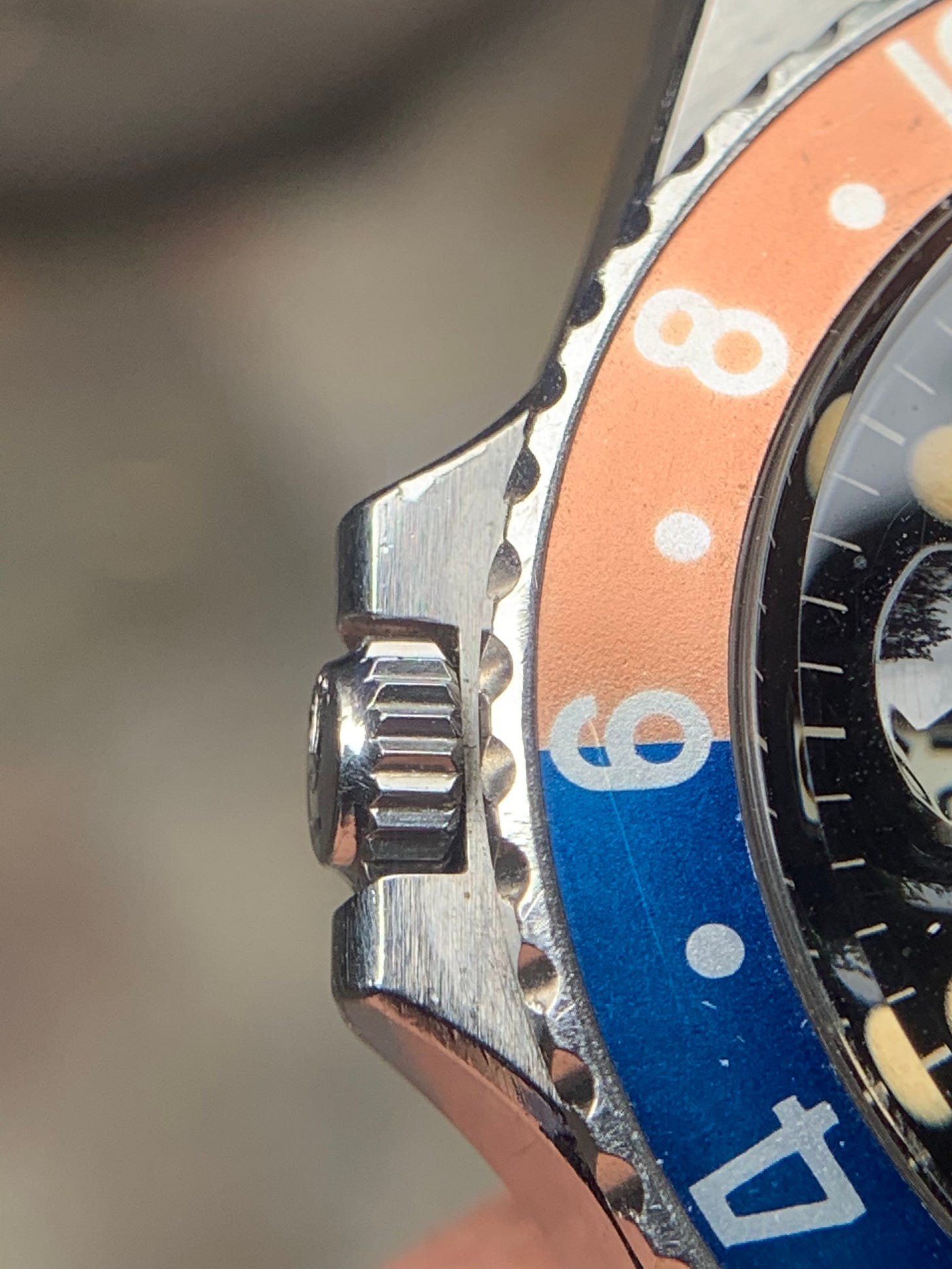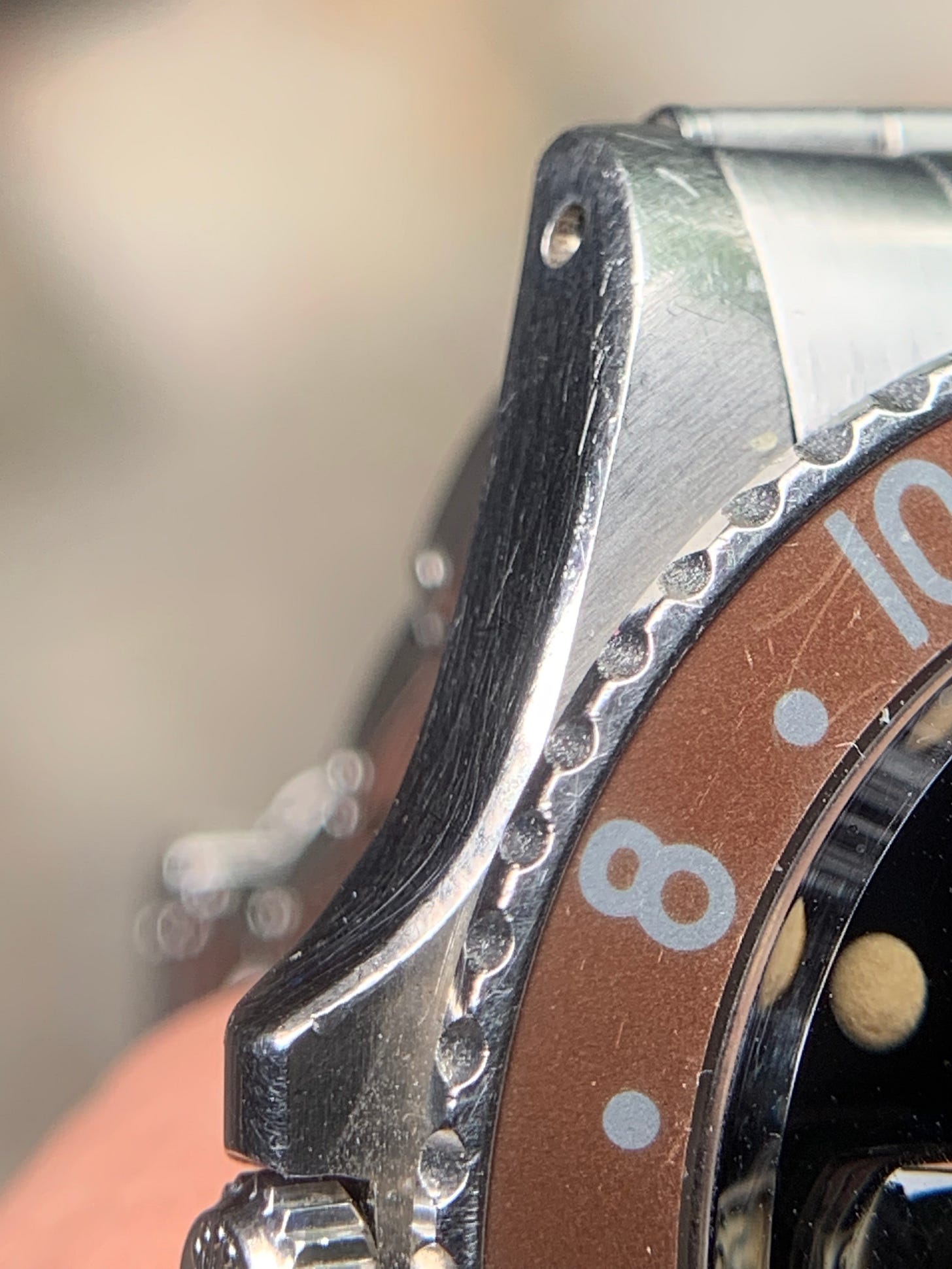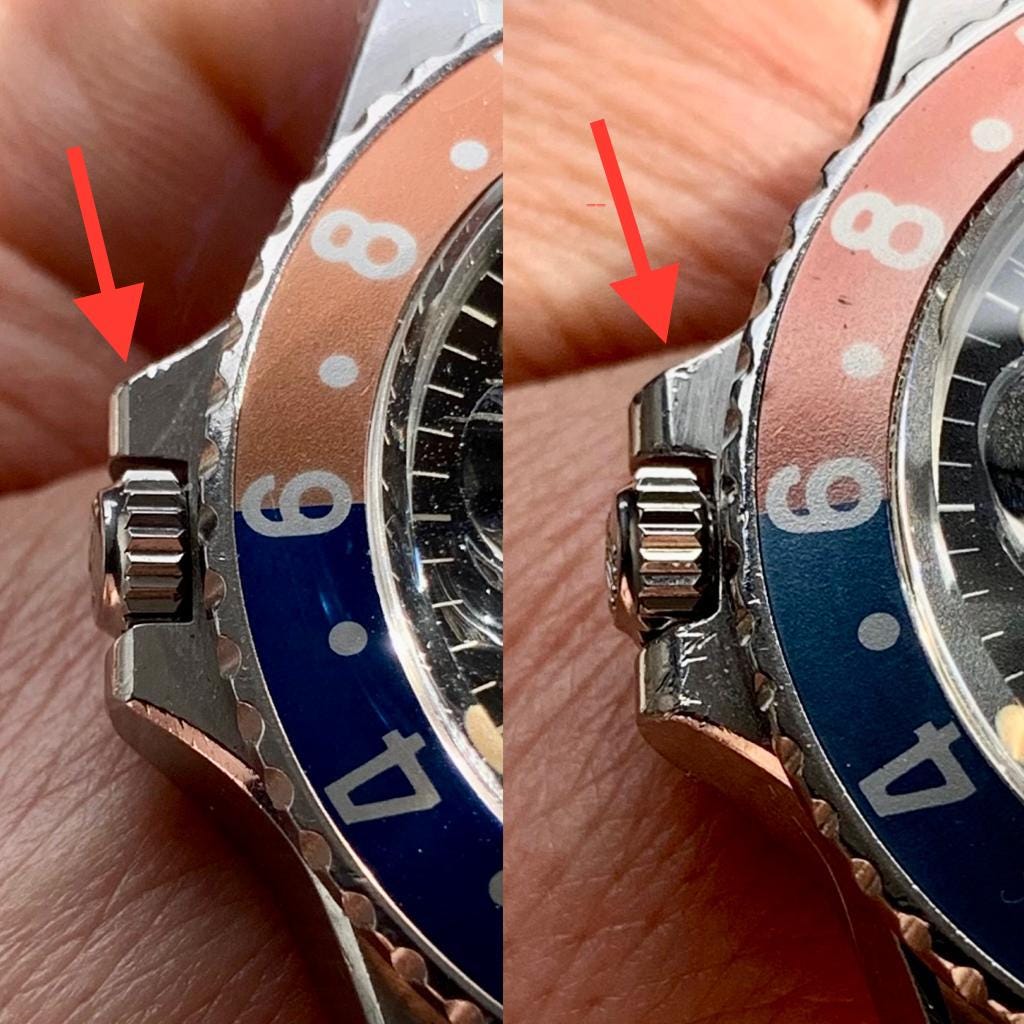The details that differentiate references over time are important to understand and share in the collector community. Recently I wrote an article that documented the progression of the gilt Submariner crown guard design. The evolution of crown guard design on the 5512 and later 5513 gilt references resulted in six distinct Marks that iterated over just seven years.
The iconic GMT Master also had an iterative development over the gilt era that continued into the matte era. From the reference 6542 origins of the GMT line born through collaboration between Rolex and Pan Am which is well documented, ‘59 saw the emergence of the successor 1675 reference with added crown guards, unlike the past 6542 reference.
The first crown guard type seen was the Mk1 “cornino” aka “parrot beak”, so-named due to its resemblance to a horn or aforementioned bird beak. I would surmise Rolex thought it would be a good idea for added crown protection, since they started adding guards on the Submariner line for divers and underwater enthusiasts. While a pilot or air traveler may not have the need for addeded protection to the degree of a diver, it likely seemed a good idea to develop them for added crown protection nonetheless. As I wrote in the Submariner article, the Mk1 1675 cornino is similar to the Mk2 5512 eagle beak in general appearance, but different in overall shape of its three facets and is a sloped as opposed to concave guard. This was the first crown guard to appear on a gmt reference and with its pointed profile is highly desired by collectors when found with a correct closed chapter ring dial and in honest, original condition (Figs. 1-3). Note the example in Fig. 3 retains original milling on the case near the bezel at the base of the beefy pointed crown guards.
Fig. 1 (courtesy @watchand)
Fig. 2 (courtesy @manhattanrollie)
Fig. 3 (courtesy @strictlyvintagewatches)
The pointed crown guard (pcg) evolved from three to two facets known in collector circles as “broad pcg” (Figs. 4,5). Perhaps it was an evolution to capture production efficiencies by hand finishing one less facet on the guard? This Mk2 style appeared near the 867xxx SN range, according to @t_swiss_t. The Mk1 and Mk2 pcg had serial number overlap, as I’ve seen both housing examples of closed chapter ring, exclamation and rare double Swiss underline, open chapter dials (the latter dial type started appearing around 875xxx). The Mk2 broad pcg is known into ’65, a bit over the 1.1M SN range before the emergence of the final gilt era crown guard. *Note that sometimes an overpolished Mk1 guard results in a lost third facet and gains an appearance similar to a Mk2 guard, so it’s important to distinguish original form from a condition perspective. Usually these polished Mk1 guards are shorter and the point is more angled from polishing, as opposed to flat. Another tell is the wide chamfer extension from the lug, as shown in side by side Fig. 6, that’s not seen on a Mk1.
Figs. 4,5 (courtesy @that_wheelchair_dude) Fig. 4
Fig. 5
Fig. 6
Finally in ’64, we see the rounded guard appearing as the final Mk3 iteration during the GMT gilt era of production. Given the lack of historical records from Rolex, it seems plausible there was some overlap from the Mk2 to Mk3 production. This guard is distinguished by its blocked and rounded profile with a facet that sits on top and extends even with the outer thread of the crown once fully screwed down to the case (Fig. 7). In addition, this crown guard features a pronounced chamfer detail that extends from the lug to the crown guard tip as seen in Fig. 8. This Mk3 guard type would cross over into the matte era with the earliest versions of the “long E” dial seen cased in the Mk0-Mk1 matte 1675. By ’72 the guard had further evolved into a more rounded, less blockish style with a facet that was now closer to the case. A comparison of this change from gilt (L) to Mk2 matte (R) is shown in Fig. 9.
Fig. 7
Fig. 8
Fig. 9
Summary of gilt era crown guards
Mk1 – “Cornino”/”Parrot beak” pointed crown guard
Mk 2 – Broad pointed crown guard
Mk 3 - Rounded crown guard
Concluding thoughts:
We see three different and distinct crown guard Marks during the gilt era, with the final Mark 3 style extending into the early matte 1675 era. This is in contrast to seven distinct Marks during the 5513/5512 gilt Submariner run. Perhaps the fewer iterations on the GMT 1675 case were due to a couple of factors: 1. Lower production volume of the GMT to Submariner line and 2. Less need to fine-tune a watch case development that was typically used in conditions that may have been less demanding on the crown. Pure speculation on both of these thoughts and interested to hear if there are other conjectures. In my opinion, the observation of overlapping crown guard Marks to serial numbers is likely a function of inventory management, with cases being used up from prior production while new crown guard updates were being introduced. While the subject matter of this writing is focused on crown guard design, more excellent and broad content for GMT fans can be found on @t_swiss_t’s website Here and on the Hodinkee ‘Reference Points: Understanding the Rolex GMT- Master’ Here.
🙏🏻 for reading.
@aircooltime
